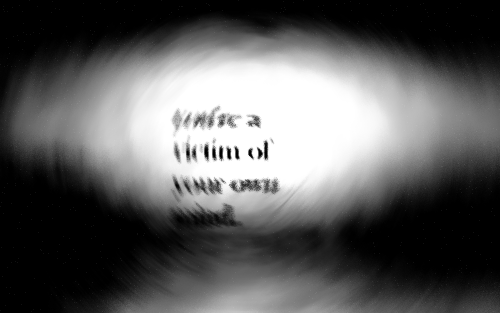
This is a perfect picture of Obsessive Compulsive Disorder and what it does to a person. Now I make fun of myself and my OCD. I do. And that's okay. I"m just being honest. What really gets on my nerves though is when someone says they're so OCD and is referring to being well organized. It's not just about that, it's a sick and sadistic need to be organized, or something bad may happen to you or a loved one! It's bloody torture! It can eat at you and eat at you all the
You can read more about it here.
Obsessive-compulsive disorder
Obsessive-compulsive neurosis; OCD
Obsessive-compulsive disorder is an anxiety disorder in which people have unwanted and repeated thoughts, feelings, ideas, sensations (obsessions), or behaviors that make them feel driven to do something (compulsions).
Often the person carries out the behaviors to get rid of the obsessive thoughts, but this only provides temporary relief. Not performing the obsessive rituals can cause great anxiety.
Causes, incidence, and risk factors
Obsessive-compulsive disorder (OCD) is more common than was once thought. Most people who develop it show symptoms by age 30. ***I was showing symptoms since the age of three.***
There are several theories about the cause of OCD, but none have been confirmed. Some reports have linked OCD to head injury and infections. Several studies have shown that there are brain abnormalities in patients with OCD, but more research is needed.
About 20% of people with OCD have tics, which suggests the condition may be related to Tourette syndrome. However, this link is not clear.
Symptoms
- Obsessions or compulsions that are not due to medical illness or drug use
- Obsessions or compulsions that cause major distress or interfere with everyday life
There are many types of obsessions and compulsions. One example is an excessive fear of germs and the compulsion to repeatedly wash the hands to ward off infection.
The person usually recognizes that the behavior is excessive or unreasonable.
Signs and tests
Your own description of the behavior can help diagnose the disorder. A physical exam can rule out physical causes, and a psychiatric evaluation can rule out other mental disorders.
Questionnaires, such as the Yale-Brown Obsessive Compulsive Scale (YBOCS), can help diagnose OCD and track the progress of treatment.
Treatment
OCD is treated using medications and therapy.
Cognitive behavioral therapy (CBT) has been shown to be the most effective type of psychotherapy for this disorder. The patient is exposed many times to a situation that triggers the obsessive thoughts, and learns gradually to tolerate the anxiety and resist the urge to perform the compulsion. Medication and CBT together are considered to be better than either treatment alone at reducing symptoms.
Psychotherapy can also be used to:
- Provide effective ways of reducing stress
- Reduce anxiety
- Resolve inner conflicts
No comments:
Post a Comment